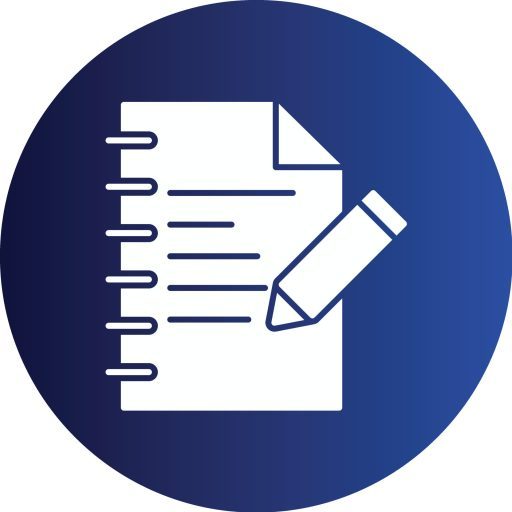NCO203 Critical Thinking and Problem Solving Group Based Assignment July 2025 | SUSS
NCO203 Group-Based Assignment
This assignment bears a maximum of 100 marks and is worth 50% of the final mark for NCO203 Critical Thinking and Problem Solving.
The deadline for the GBA is as follows:
Friday, 24th October 2025, 11:55 pm
This is a group-based assignment. You should form a group of 3 to 5 members from your T-Group. Each T-Group is allowed a maximum of 12 members. Please elect a group leader who is responsible for uploading the final report on behalf of the group
Overview
The GBA consists of 2 parts: 1) a written report and 2) a group presentation.
I. Written report
- Presents the problem-solving stages that the group undertook.
- Maximum 1200 words
- 45% of the GBA marks
II. Presentation
- Summarises the written report in 5 minutes or less
- Q-and-A with the course instructor for up to 10 minutes
- 55% of the GBA marks
I. Written Report
No more than 1200 words. Maximum scorable: 45 marks
Question 1
1. Implement the first stage of the problem-solving framework: Identify and define the problem that you are working on.
a. What is the general problem? (1 mark)
b. Analyse the general problem: Why is the problem worth solving? (4 marks)
c. Analyse the specific problem: What is the specific actionable problem and why? (5 marks)
Question 2
2. Implement the second stage of the problem-solving framework: Generate possible solutions to the problem.
a. What are all the results of brainstorming? (2 marks)
b. Organise the results: What are the 3 best results and how are they chosen? (3 marks)
Question 3
3. Implement the third stage of the problem-solving framework: Evaluate solutions.
a. What does research say about the viability of the first possible solution? (4 marks)
b. What does research say about the viability of the second possible solution? (4 marks)
c. What does research say about the viability of the third possible solution? (4 marks)
Question 4
4. Implement the fourth stage of the problem-solving framework: Practise pre-empting possible problems in implementation.
a. Which possible solution do you choose to implement and why? (3 marks)
b. Write a fallacious argument against your argument in 4a and name the fallacy in brackets after the argument. (3 marks)
c. How would you monitor the solution and why? (4 marks)
d. What problems do you expect and how would you deal with them?
i. Ethical problems (4 marks)
ii. Practical problems (4 marks)
II. Oral Presentation
15 minutes. Maximum scorable: 55 marks
1. Summarise the written report (5 marks)
2. Question-and-answer (50 marks)
Rubrics
I. Written Report
No more than 1200 words. Maximum scorable: 45 marks
Question 1
1. Implement the first stage of the problem-solving framework: Identify and define the problem that you are working on.
a. Analyse the general problem: What is the general problem? (1 mark)
- Your answer has to be clearly distinct from your answer to 1c.
b. Analyse the specific problem: Why is the problem worth solving? (4 marks)
- State why the general problem is worth solving.
c. What is the specific actionable problem and why? (5 marks)
- The problem stated should be specific and actionable.
- Explain how you derive the specific problem from the general problem.
Question 2
2. Implement the second stage of the problem-solving framework: Generate possible solutions to the problem.
a. What are all the results of brainstorming? (2 marks)
- Give at least 5 results that are distinct from one another.
b. Organise the results: What are the 3 best results and how are they chosen? (3 marks)
- List 3 results.
- Give your criterion or criteria for choosing the 3 results.
Question 3
3. Implement the third stage of the problem-solving framework: Evaluate solutions.
a. What does research say about the viability of the first possible solution? (4 marks)
- Have a serially supportive structure and support with evidence.
b. What does research say about the viability of the second possible solution? (4 marks)
- Have a serially supportive structure and support with evidence.
c. What does research say about the viability of the third possible solution? (4 marks)
- Have a serially supportive structure and support with evidence.
Question 4
4. Implement the fourth stage of the problem-solving framework: Practise pre-empting possible problems in implementation.
a. Which possible solution do you choose to implement and why? (3 marks)
- Extend the argument used in arguing for the viability of the chosen solution in Q3.
b. Write a fallacious argument against your argument in 4a and name the fallacy in brackets after the argument. (3 marks)
- Write a fallacious argument against your argument in 4a
- State the informal fallacy
c. How would you monitor the solution and why? (4 marks)
- State the variables and justify them with respect to the goal/s of your solution.
- State the method of monitoring (RCT or less rigorous method), and justify your choice.
d. What problems do you expect and how would you deal with them?
i. Ethical problems (4 marks)
- Give at least 1 ethical problem and how to address it.
- Give an argument for your answer by ethical reasoning.
ii. Practical problems (4 marks)
- Give at least 1 practical problem and how to address it.
- Give an argument for your answer
II. Oral Presentation
15 minutes. Maximum scorable: 55 marks
1. Summarise the written report (5 marks)
- Why do you specify the problem in that specific way?
- Why do you choose the particular possible solution to implement?
- What ethical or practical problem do you expect?
2. Question-and-answer (50 marks)
- Answer the question directly.
- Have clear statements of reasons and claims.
- Have strong reasons (including evidence).
- 5 questions will be asked. For < 5 group members, a group member may answer more than one question, but no group member may answer thrice.

